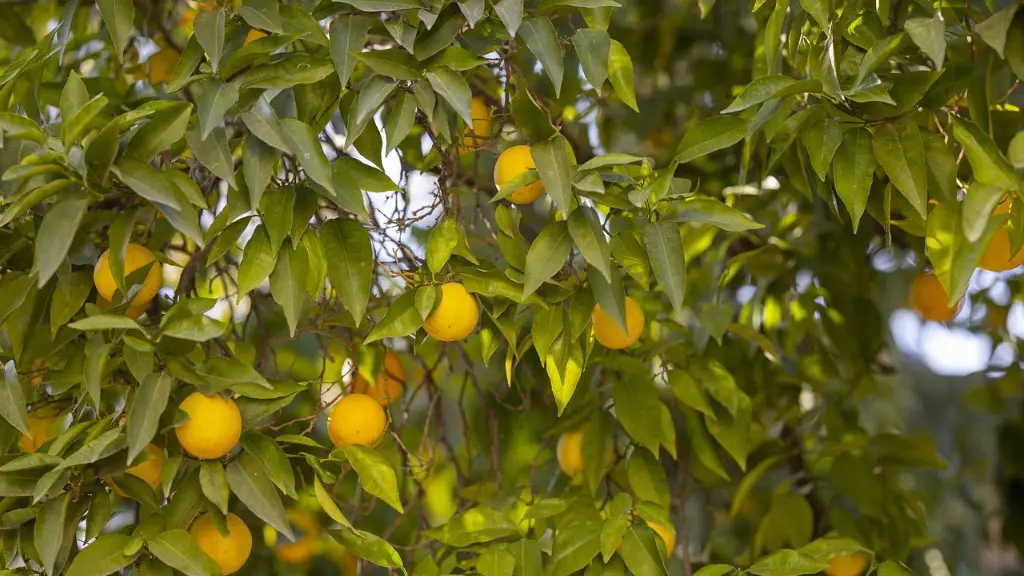When should you trim a lemon tree? Trimming a lemon tree can be beneficial for its growth and production, but it is important to properly time pruning to ensure it is done at the right season. Generally speaking, lemon trees can be pruned during late winter or early spring to remove dead, diseased, and damaged branches, as well as to shape the canopy and reduce its size. Pruning should be done with care, since too much can stunt growth and reduce the tree’s fertility. Additionally, it is important to watch for signs of leaf discoloration, yellowing, and other diseases that can affect the tree’s yield.
The Benefits of Pruning a Lemon Tree
Pruning is beneficial for the tree’s overall health, as it allows air circulation and light penetration to reach the interior branches and reduces the number of branches competing for light, water, and nutrients. It also encourages a ‘bushier’ tree structure which can improve the size and shape of the lemon fruits, as well as overall yield. Pruning is especially beneficial before the ‘on-season’, which typically starts in May, as it will serve to enhance the tree’s vigor and vitality, enabling it to produce healthier fruits.
The Tools Needed for Pruning
Pruning a lemon tree requires the use of proper tools, such as pruning shears and a sharp knife, to remove larger branches. When selecting a pruning tool, it is important to make sure it is sharp and well-maintained to reduce the risk of damaging the tree’s branches. It is also important to ensure the pruning shears are properly adjusted to fit the branch in question to ensure a clean cut.
How to Properly Prune a Lemon Tree
To properly prune a lemon tree, start by removing dead, damaged, and diseased branches, as well as branches that are overly crowded within the canopy. Next, use pruning shears to vigorously trim back branches in order to shape the tree and promote healthy growth. It is important to make sure that no more than one-third of the tree’s crown is removed, as this will encourage leaf growth and vibrant fruits. Lastly, inspect the tree after pruning, to ensure no further pruning is necessary.
Potential Drawbacks of Pruning
Pruning a lemon tree can also have some drawbacks. Pruning too much can damage the tree’s structure and encourage the development of inedible or small lemons. Additionally, pruning during the wrong season, such as during the summer months when the tree is actively growing, can be detrimental to the tree’s health and production. Lastly, improper pruning can cause branches to grow too close to the trunk, leading to damage.
Other Considerations When Pruning
When pruning a lemon tree, it is important to consider the severity of the pruning. Pruning should always be done with care, as too much or too aggressive pruning can damage the branches and stunt the tree’s growth. Additionally, it is important to remove any fallen fruit, leaves, and debris from the base of the tree, as this can harbor disease and pests. Lastly, if the tree is suffering from any type of disease, it is best to contact a professional and seek advice before proceeding with pruning.
The Right Timing for Pruning a Lemon Tree
As mentioned before, it is best to prune a lemon tree during the late winter or early spring before the ‘on-season’ begins in May. This is when the tree is most dormant and less resistant to pruning. Pruning can also be done during the summer months, but should be done with care and minimal amount of branches removed to avoid damaging the tree. Lastly, it is also important to monitor the tree and watch for signs of disease and drought stress, which could require additional pruning or other forms of treatment.
The Proper Care of a Lemon Tree
In addition to pruning, proper maintenance of a lemon tree is essential for healthy growth and production. It is important to ensure the soil is kept moist, but not too wet, as over-watering can lead to root rot and other diseases. Additionally, the tree should be mulched to help conserve moisture and keep weeds at bay. Lastly, fertilizer should be applied in spring, summer, and fall to ensure adequate nutrition and to promote foliage growth and fruit development.
Conclusion
Pruning a lemon tree can be beneficial for its growth and production, as long as it is done correctly and at the right time. Pruning should be done during late winter or early spring with care, removing only one-third of the tree’s canopy. Additionally, it is important to monitor the tree for signs of disease and take appropriate action. Furthermore, proper maintenance such as watering and fertilization are necessary to ensure healthy growth and production.

